– Peru approves 10 year ban on GM crops (GM Watch, June 8, 2011):
NEWS FROM LATIN AMERICA
1.Peru approves 10 year ban on GM crops – GENET-news
2.Brazilian commission changes its internal statutes to speed up approval of GM crops – GM-Free Brazil
The man who trades freedom for security does not deserve nor will he ever receive either. – Benjamin Franklin
– Peru approves 10 year ban on GM crops (GM Watch, June 8, 2011):
NEWS FROM LATIN AMERICA
1.Peru approves 10 year ban on GM crops – GENET-news
2.Brazilian commission changes its internal statutes to speed up approval of GM crops – GM-Free Brazil
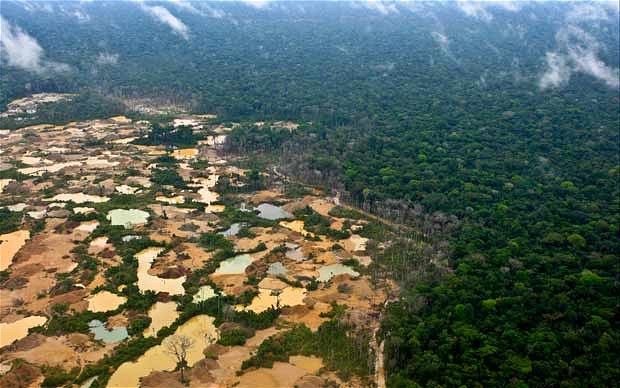
Illegal goldmining is laying waste to Madre de Dios, the most biodiverse region in the world Photo: Miguel Bellido
We sped across the jungle along a narrow manmade path. ‘Quick! Hide the camera! If they see this, they’ll beat us up,’ shouted the motorcyclist who was driving me.
Visitors are not welcome in Guacamayo, one of the biggest illegal goldmining sites in the world, so large it is visible from space. Above the noise of the bike we could just make out a distant rumble of machines.
A sharp turn of the wheel later and the trees vanished, replaced by a vast desert dotted with shacks covered in blue plastic sheets where thousands of miners live. We were at the heart of a 21st-century gold rush that, environmentalists warn, is rapidly destroying the Amazon’s Madre de Dios (Mother of God) region in south-east Peru, 33,000 square miles of low-lying, dense rainforest containing the richest biodiversity on earth.
Read moreGold rush in the Amazon destroys the most biodiverse region in the world
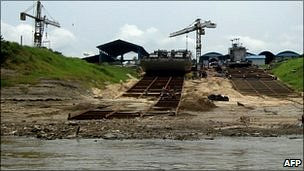
Amazon shipyards have been left high and dry
The Amazon river has dropped to its lowest level in 40 years in north-eastern Peru, causing severe economic disruption in a region where it is the main transport route.
At least six large boats have been stranded near the port city of Iquitos.
The low water level is the result of a prolonged spell of dry weather, Peru’s national meteorological office said.
The river is expected to fall further before the rainy season begins next month.
Cut off
Iquitos and other towns in Peru’s rainforest region have no road links to the rest of the country, and depend on the Amazon and its tributaries for transport.

Rabid vampire bats have attacked more than 500 people in Peru’s Amazon Photo: PHOTOLIBRARY
The attacks occurred in the village of Urakusa, in northeastern Peru, where the indigenous Aguajun tribe lives. At least four people are believed to have succumbed to rabies as a result.
Medical supplies and vaccines to treat those infected with rabies have been sent to the tribe.
Rabies, a virus that causes acute inflammation of the brain, is usually spread to humans by dog bites and has an incubation period that can last several months.
See also:
– Peru Declares State Of Emergency Amid Freezing Temperatures, Hundreds Of Children Die
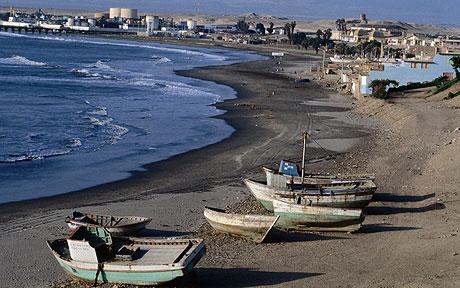
The plague outbreak is close to Chicama beach, a popular draw for tourists to Peru.
Oscar Ugarte, the health minister, said authorities were screening sugar and fish meal exports from Ascope province, located about 325 miles north-west of Lima.
Chicama beach, a popular draw for tourists to Peru, is not far away.
Mr Ugarte said the boy, who had Down syndrome, died of bubonic plague on July 26.
He said on Monday that most of the infections were bubonic plague, with four cases of pneumonic plague.
Read morePeru: Deadly outbreak of bubonic and pneumonic plague
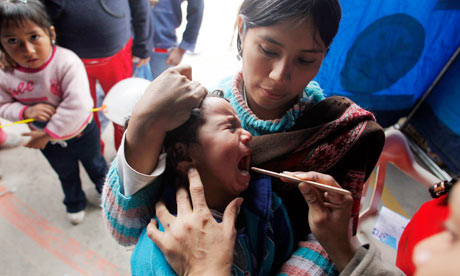
A doctor checks a child in Lima, where temperatures have also plunged and a vaccination project is now under way. (Reuters)
Peru has declared a state of emergency after hundreds of children died from freezing conditions that have seen temperatures across much of the South American country plummet to a 50-year low. In 16 of Peru’s 25 regions, temperatures have fallen below -24C.
Reports from the country say 409 people, most of them children, have already died from the cold, with temperatures predicted to fall further in coming weeks.
Worst hit are Peru’s poorest and most isolated communities, which are already living on the edge of survival in remote Andean mountain villages more than 3,000 metres above sea level.
Although those living at such high-altitude would expect temperatures to drop below zero at this time of year, NGOs and government officials say many are unable to withstand the extreme cold which they are now experiencing.
“Over the past three or four years we have seen temperatures during the winter months get lower, and people are unable to survive this,” said Silvia Noble, from Plan Peru, an NGO. “This cold weather is now extending into areas that never saw these low temperatures before and children and elderly people are especially at risk as they are not physically strong enough to last month after month of sub-zero conditions.”
Read morePeru Declares State Of Emergency Amid Freezing Temperatures, Hundreds Of Children Die

Coca leaf is used to make cocaine Photo: PA
Just over 45 per cent of coca in the world comes from Peru, while 39.3 per cent is grown in Colombia and 15.3 per cent in Bolivia, according to a report by the United Nations Office on Drugs and Crime (UNODC).
“Peru has surpassed Colombia as the world’s leading coca leaf producer,” Aldo Lale, the UNODC representative in Bogota, said at a press conference.
Peru produced 119,000 metric tonnes of coca leaf in 2009, while Colombia produced 103,000 tonnes during the same period, Mr Lale said.
Colombia remains the largest source for processed cocaine, although its production has fallen dramatically from 600 tonnes in 2007 to 410 tonnes in 2009.
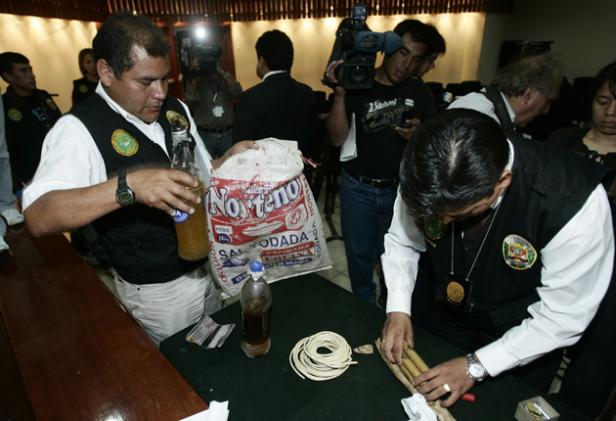
A police officer in Lima shows off bottles of human fat that were allegedly found on gang members who confessed to murdering local peasants to harvest fat (AP)
Police in Peru say they have arrested three members of a gang who murdered a string of peasant farmers, drained the fat from their dead bodies, and then attempted to sell it to European cosmetics manufacturers.
The men have confessed to a total of five killings, but are suspected of dozens more. Police believe they approached their victims on remote roads and lured them to a hut in the jungle with talk of being able to introduce them to a potential employer. Instead, the victims were bludgeoned to death.
Each of their bodies then had its head, arms and legs cut off. Major organs were removed, and discarded, before the torso was suspended from hooks in the ceiling of the hut. Candles were placed beneath, so that melting fat would dribble into pots, pans and other collecting vessels.
“We have broken up a criminal organisation dedicated to trafficking bodily fluids and human fat,” said local police commander Angel Toledo, on Thursday. The large containers of illicit fat were latter decanted into bottles for export, he added.
“Without a doubt [the gang] have committed various crimes like kidnapping and conspiring to commit criminal acts. [They] have spoken about how they committed crimes with the purpose of extracting their fat in rudimentary laboratories to later sell for the price of $15,000 (£9,000) per litre.”
Protesters charge down a highway near Bagua armed with sticks
At least 31 people have died in clashes in Peru between the security forces and indigenous people in the Amazon region.
Those killed included at least 22 tribesmen and nine policemen. The violence took place as security forces tried to end a road blockade.
There have been fuel and transport blockades in Peru’s Amazon region for almost two months.
Local people say new laws will make it easier for foreign companies to exploit their land for natural resources.
Most serious
The fighting took place at a jungle highway near the town of Bagua, more than 1,000km (600 miles) north of the capital, Lima.
They are the most serious to have broken out since indigenous groups began a protest campaign in April.
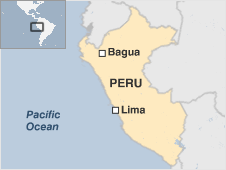 |
They are opposed to plans by the government of President Alan Garcia to open up communal jungle lands for oil exploration, logging, mining and large-scale farming.
Indigenous leaders say police using helicopters opened fire on demonstrators in the latest incident.
One indigenous leader, Alberto Pizango, told reporters that he held the government responsible for the killings, which he said had taken place during a peaceful demonstration.
The authorities say the police were fired on first, and Mr Garcia accused the Indians of “falling to a criminal level.”
Earlier this month, Peru’s military was authorised to give support to police in the escalating dispute.
Read morePeru: Deadly clashes between the police and indigenous people in the Amazon region
A lost city discovered deep in the Amazon rainforest could unlock the secrets of a legendary tribe.
Little is known about the Cloud People of Peru, an ancient, white-skinned civilisation wiped out by disease and war in the 16th century.
But now archaeologists have uncovered a fortified citadel in a remote mountainous area of Peru known for its isolated natural beauty.
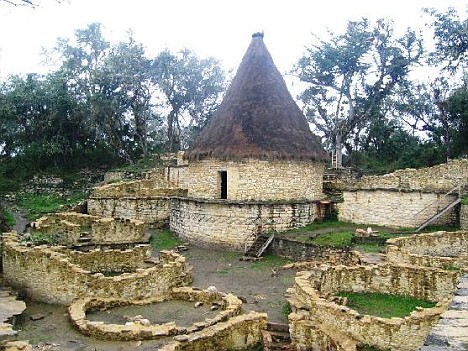
An ancient Chachapoyas village located close to the area where the lost city was found
It is thought this settlement may finally help historians unlock the secrets of the ‘white warriors of the clouds’.
The tribe had white skin and blonde hair – features which intrigue historians, as there is no known European ancestry in the region, where most inhabitants are darker skinned.
The citadel is tucked away in one of the most far-flung areas of the Amazon. It sits at the edge of a chasm which the tribe may have used as a lookout to spy on enemies.

The area where the lost city was discovered by a team of archaeologists
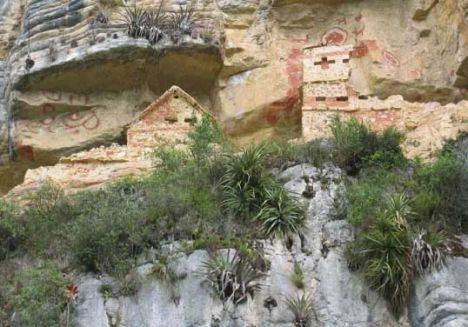
The Chachapoyas, also called the Warriors of the Clouds, were an Andean people living in the cloud forests of the Amazonian region of present-day Peru
The main encampment is made up of circular stone houses overgrown by jungle over 12 acres, according to archaeologist Benedict Goicochea Perez.
BRASILIA: South America is thinking of creating a common currency and a central bank along the lines of those in the European Union’s eurozone, Brazilian President Luiz Inacio Lula da Silva said yesterday.
The idea is a logical next step following the signing last Friday of a treaty creating a Union of South American States that aims to promote joint regional customs and defense policies, Lula said during his weekly radio broadcast.
“Many things still haven’t been realised. We are now going to create a Bank of South America. We are going to move forward so in the future we’ll have a single central bank, a common currency,” he said.
But, he added: “This is a process. It won’t be something that happens quickly.”
Argentina, Bolivia, Brazil, Chile, Colombia, Ecuador, Guyana, Paraguay, Peru, Suriname, Uruguay and Venezuela all signed up to the Unasur treaty creating the regional union during a ceremony in Brasilia last Friday.